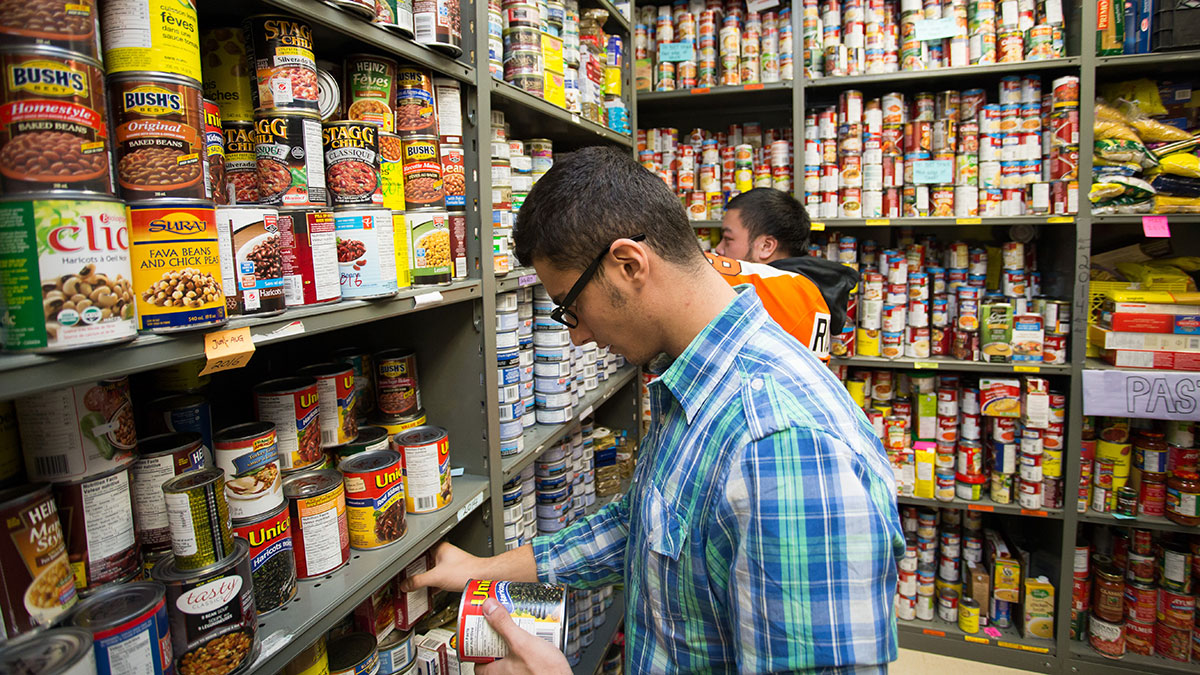First-ever food bank study examines food insecurity at U of A
 Sean Trayner
Sean TraynerStationing herself in the Campus Food Bank to ask people about their food insecurity, Jasmine Farahbakhsh conducted the first on-campus survey of food bank clients.
Farahbakhsh collected data on food bank users’ demographics, coping methods and level of food insecurity, which was defined as the impact of financial or proximity based access in post-secondary. She surveyed 58 people on their lack of food and asked questions on topics such as how often they skip meals because of unaffordability.
Farahbakhsh found 90 per cent of students to be either moderately or severely food insecure.
“You think of post secondary students as a privileged group. If you can afford to go to university then of course you must have a lot of money but often times that comes at the expense of other things,” Farahbakhsh said. “People might go to university but then might not have enough money to spend on things like food.”
Farahbakhsh was interested in pursuing this research because there has never been a survey based on post secondary food bank use with an on-campus food bank. Many people who she has spoken to are surprised to know that there is an on-campus food bank.
The U of A Campus Food Bank was established in 1991 and was the first post-secondary food bank in Canada. She hopes the research will let students who might need it be aware that it exists for them.
“We were expecting people who come to the food bank to all be food insecure, especially because in our society there’s a stigma around going to the food bank,” Farahbakhsh said. “People don’t think that they should be going so it was surprising that 10 per cent of our sample came in at food secure and showed that they didn’t have problems.”
The survey shed light on food bank clients and how people understand food security. Farahbakhsh explained there was a huge range of people who used the food bank.
Some deemed themselves as food secure while others used drastic measures of food coping. For example, three students surveyed said they would steal food.
“It’s surprising that students would be stealing food. I’m so happy they told us about it cause its good to know about these things,” Farahbakhsh said.
Farahbakhsh explained that the most common coping strategy used by 86 per cent of surveyed students was using student loans to pay for food. Other students said they applied for jobs or asked for more hours. Using employment to cope with food insecurity is often difficult especially for international students, who were overrepresented in the survey, Farahbakhsh said.
Other coping methods used were using a credit card to pay for food and delaying the acquisition of university supplies such as textbooks — or not getting supplies at all.
Farahbakhsh said the goal if her research is to find where students need resources so they won’t have to use the food bank at all.
“In general what you might hear from food banks is that they don’t want to have to be there,” Farahbakhsh said. “An eventual goal of this research is to prevent students from needing to use the food bank and to look at where they’re getting funding from or trying to give them enough resources so they can be self-sufficient without needing the help of the food bank.”





The sheer volume of food moving through the food bank blows my mind. It really puts food insecurity on campus into perspective. It’s a huge issue.
Food banks began due to a significant social problem in society. I never once thought about a food bank on a university campus. This is a good short term solution, but I agree that a long term alternative needs to be considered. Thanks for the insight!